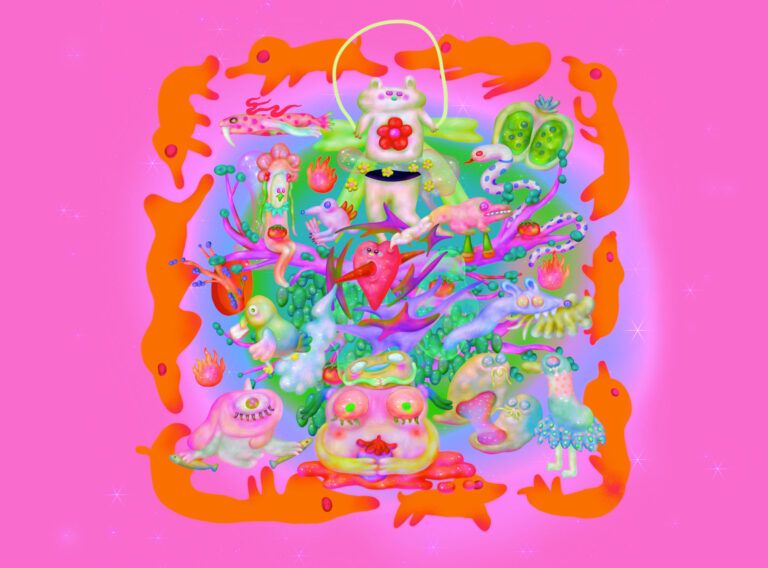Let’s start at the beginning. What drew you two to explore fetish as a medium in your artwork?
We can say that fetish is not just a medium in our artistic works but it’s the very beginning. It is the source of our collaborative creativity and its roots. We met and started communicating precisely based on a shared interest in latex fetishism. It had been a part of our separate lives since our teenage years and became a binding element when we met. It’s not merely an artistic technique but rather a personal story.



As a creative duo, what strategies do you use to maintain open communication and foster creative synergy?
The main thing we do is to try to not get in each other’s way. If one of us has an idea and a clear understanding of how to implement it, the other person does not try to change anything but assists in completing the process, helps out or, for example, poses as a model. When we generate an idea together, we cautiously cultivate it by actively listening and refraining from criticism. But it’s the result of a lot of hard work. We have gone through blood, sweat, and tears to develop these rules for ourselves.



Your artwork bridges two worlds, blending the charm of Slavic folklore with a fetish aesthetic. Can you describe the symbolism behind specific fetish elements used in your artwork within the context of Slavic myths?
We chose to blend fetish elements with folklore because these things have a common denominator, namely the word “fetish” itself. People from ancient times worshipped fetishes, idols, and totems. More often than not, behind all this was the animalistic fear of the forces of nature, which people began to visualise in the form of various gods and beings. And often, these deities were creatures with a rather grim reputation. They were depicted as something unknown, different from humans or capable of changing their shape. People both feared these beings and worshipped them. Nothing has changed today; religions and beliefs evolve and new ones replace old idols but people always find a fetish to worship.



Do you have any specific goals or milestones you want to achieve in your artistic journey?
We’d love to create our universe, our own world inhabited by exotic latex creatures!
But there are more realistic plans coming down from the heavens to the Earth.
We would be interested in organising an exhibition featuring our works. All the content we produce is in the realm of social media, which, on the one hand, grants access to our work to a large number of people, but on the other, all the feedback we receive from followers is virtual. We would like to see people’s reactions in person, work with a real space, and present our works in a physical setting.
Additionally, we would like to collaborate with major brands. This is always a challenge for creativity, and we thoroughly enjoy it.


At SWARM Mag, we are now focusing on the theme THE ROOTS OF TASTE. So, the last question is: how do you remain connected to your roots while embracing the future?
Our connection to our roots and our outlook towards the future are closely intertwined with who we are and where we come from. We are like hobbits, born and raised in Russia. Although our creativity is associated with exceptionally provocative imagery and latex fetish, our roots stem from a love for nature, cosiness, and tranquillity that we cherish in the little things of our home. However, the events of the past two years have changed this, distorting and disfiguring reality. We were forced to leave our home and country because what was happening there contradicted our views.


Today’s picture of Russia, where aggression and destruction seem to be the norm, shatters our perception of what our homeland is. But even in these dark times, we understand that we must not lose our connection to our roots; we just need to choose the path of growth towards the light. We continue to believe in a bright future and seek light in the darkness because even a sturdy tree with strong roots will perish without the sun.





